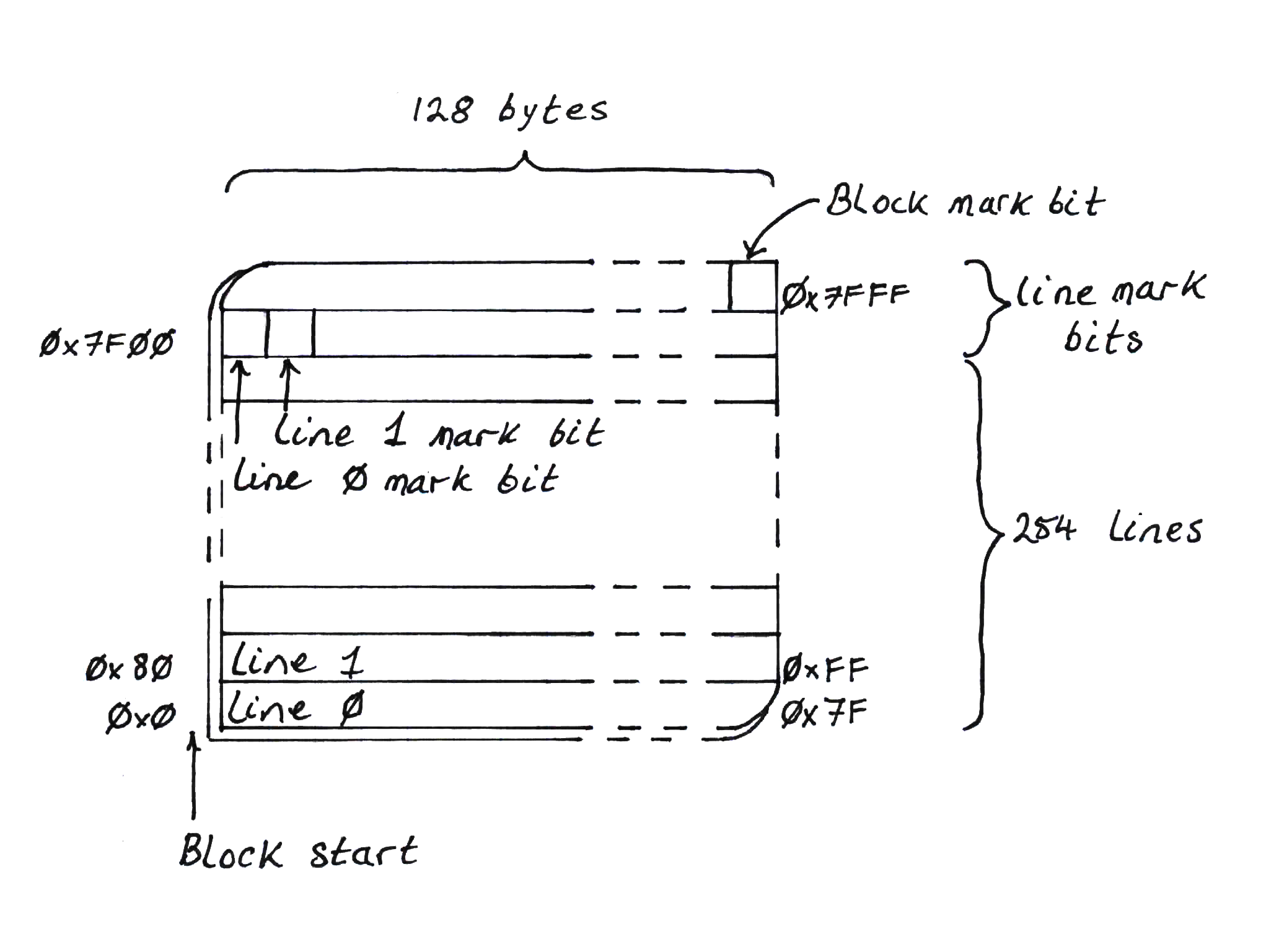An allocator: Sticky Immix
Quickly, some terminology:
- Mutator: the thread of execution that writes and modifies objects on the heap.
- Live objects: the graph of objects that the mutator can reach, either directly from it's stack or indirectly through other reachable objects.
- Dead objects: any object that is disconnected from the mutator's graph of live objects.
- Collector: the thread of execution that identifies objects that are no longer reachable by the mutator and marks them as free space that can be reused
- Fragmentation: as objects have many different sizes, after allocating and freeing many objects, gaps of unused memory appear between objects that are too small for most objects but that add up to a measurable percentage of wasted space.
- Evacuation: when the collector moves live objects to another block of memory so that the originating block can be de_fragmented
About Immix
Immix is a memory management scheme that considers blocks of fixed size at a time. Each block is divided into lines. In the original paper, blocks are sized at 32k and lines at 128 bytes. Objects are allocated into blocks using bump allocation and objects can cross line boundaries.

During tracing to discover live objects, objects are marked as live, but the line, or lines, that each object occupies are also marked as live. This can mean, of course, that a line may contain a dead object and a live object but the whole line is marked as live.
To mark lines as live, a portion of the block is set aside for line mark bits, usually one byte per mark bit. If any line is marked as live, the whole block is also marked as live. There must also, therefore, be a bit that indicates block liveness.
Conservative marking
The Immix authors found that marking every line that contains a live object could be expensive. For example, many small objects might cross line boundaries, requiring two lines to be marked as live. This would require looking up the object size and calculating whether the object crosses the boundary into the next line. To save CPU cycles, they simplified the algorithm by saying that any object that fits in a line might cross into the next line so we will conservatively consider the next line marked just in case. This sped up marking at little fragmentation expense.
Collection
During collection, only lines not marked as live are considered available for re-use. Inevitably then, there is acceptance of some amount of fragmentation at this point.
Full Immix implements evacuating objects out of the most fragmented blocks into fresh, empty blocks, for defragmentation.
For simplicity of implementation, we'll leave out this evacuation operation in this guide. This is called Sticky Immix.
We'll also stick to a single thread for the mutator and collector to avoid the complexity overhead of a multi-threaded implementation for now.
Recommended reading: Stephen M. Blackburn & Kathryn S. McKinley - Immix: A Mark-Region Garbage Collector with Space Efficiency, Fast Collection, and Mutator Performance
About this part of the book
This section will describe a Rust crate that implements a Sticky Immix heap. As part of this implementation we will dive into the crate API details to understand how we can define an interface between the heap and the language VM that will come later.
What this is not: custom memory management to replace the global Rust allocator! The APIs we arrive at will be substantially incompatible with the global Rust allocator.